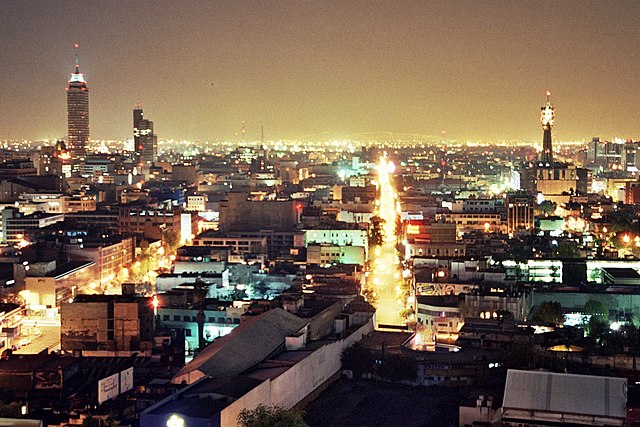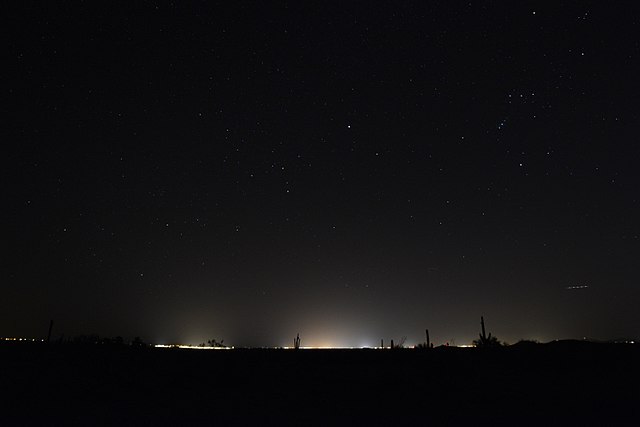The dark-sky movement is a campaign to reduce light pollution. The advantages of reducing light pollution include an increased number of stars visible at night, reducing the effects of electric lighting on the environment, improving the well-being, health and safety of people and wildlife, and cutting down on energy usage. Earth Hour and National Dark-Sky Week are two examples of such efforts.
Mexico City at night, showing skyglow bright enough to read a book outside
Light pollution is the presence of any unwanted, inappropriate, or excessive artificial lighting. In a descriptive sense, the term light pollution refers to the effects of any poorly implemented lighting sources, during the day or night. Light pollution can be understood not only as a phenomenon resulting from a specific source or kind of pollution, but also as a contributor to the wider, collective impact of various sources of pollution.
Light pollution over Melbourne, Australia
A light pollution source, using a broad spectrum metal halide lamp, pointing upward at Uniqema factory, Gouda, the Netherlands
The city of Phoenix, seen from 55 miles (89 km) away in Surprise, Arizona
An office building is illuminated by high-pressure sodium (HPS) lamps shining upward. Much light goes into the sky and neighboring apartment blocks, causing light pollution.





